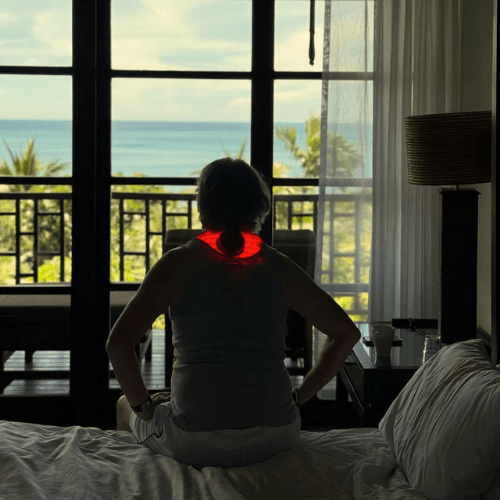Common Misconceptions About the Dangers of Red Light Therapy
Red light therapy has attracted attention for its health benefits. However, misconceptions persist. From claims of being a miraculous cure-all to unfounded fears of serious side effects, these misunderstandings can confuse individuals about its real implications. We explore the science and facts to offer a balanced perspective on the misconceptions of the dangers of red light therapy.
Table of content
Overview of Red Light Therapy

Red Light Therapy (RLT) refers to using specific wavelengths of red and near-infrared light to stimulate cellular function in the human body. RLT refers to using specific wavelengths of red and near-infrared light to stimulate cellular function in the body. The primary objective of red light therapy is to boost energy production within cells, thereby supporting various physiological processes including healing, pain relief, and muscle recovery.
Importance of Understanding Red Light Therapy Device Usage Guidelines
Understanding how to use red light therapy effectively and safely is critical. Maximizing the therapy's benefits requires correct usage. Experts recommend following manufacturer guidelines and medical advice. This also helps avoid overexposure.
Understanding how RLT works, along with adhering to usage instructions, may prevent misunderstandings about the therapy's effects and safety. Like any therapy, it's best to talk to a healthcare professional before starting. This is especially important for people with existing health conditions or those taking certain medications.
Safety Concerns and Misconceptions on Dangers of Red Light Therapy

Various misconceptions surround red light therapy regarding its safety and efficacy. Understanding the truth behind these myths is crucial for potential practitioners.
Misconception 1: Red Light Therapy is the Same as Tanning
A common misconception is that red light therapy is similar to tanning. However, unlike tanning beds that emit harmful ultraviolet (UV) rays, red light therapy uses specific wavelengths that do not cause damage to the skin or lead to skin cancer. RLT safely offers therapeutic benefits without the skin cancer risk associated with UV exposure.
Misconception 2: RLT is only used for Cosmetic Purposes
While red light therapy is popular for promoting aesthetic improvements like reducing wrinkles and improving skin texture, its application extends beyond cosmetics. Healthcare professionals widely use red light therapy in fields like physiotherapy and sports medicine for pain management and muscle recovery, as well as in treating conditions such as arthritis and minor injuries.
Misconception 3: Red Light Therapy Requires Special Equipment
Some individuals mistakenly believe that effective red light therapy requires expensive, specialized equipment. In reality, there are diverse red-light devices available. These cater to different needs and budgets, ranging from professional-grade machines in wellness centers to portable devices for home use, like Lumaflex Body Pro and Lumaflex Essential.
Misconception 4: RLT has Dangerous Side Effects
Another myth claims that red light therapy carries significant side effects. In contrast, RLT is generally regarded as safe and non-invasive with minimal adverse effects when used correctly. However, like any therapy, it is recommended to follow manufacturer guidelines and medical advice to avoid overexposure or improper use.
Misconception 5: Results with RLT are Immediate
Some people expect instant results from red light therapy, a misconception that oversells its capabilities. Many practitioners report positive outcomes. These usually occur over time with consistent use. Results vary based on the individual’s condition and their commitment to the treatment protocol.
Myths About the Dangers of Red Light Therapy Devices
Red light therapy(RLT) is gaining popularity for its potential to treat various health and skincare concerns. RLT is gaining popularity for its potential to treat various health and skincare concerns. Many users wonder if they can incorporate this therapy into their daily routine, given its wide array of benefits.
Myth 1: Red Light Therapy Can Damage Skin
One prevalent myth is that these devices can cause damage to the skin, potentially leading to skin cancer. However, it's important to understand how red light therapy works to dispel these unfounded fears. Unlike UV rays, which can damage skin cells and potentially cause cancer, red light therapy uses safe levels of light that do not damage DNA.
Myth 2: Red Light Therapy Can Worsen Medical Conditions
Red light therapy (RLT) is a non-invasive treatment that utilizes specific wavelengths of light to promote healing and reduce inflammation. It is indicated by research that liver conditions are not worsened by RLT; in fact, it may provide therapeutic benefits. It has been shown by studies that cellular function can be enhanced and tissue regeneration improved by red light. As such, individuals with liver issues can consider RLT as a safe option for complementary treatment, but it is essential to consult with a healthcare professional before starting any new therapy.
Myth 3: Red Light Therapy Interferes with Cellular Processes
Furthermore, some individuals believe that red light therapy may interfere with cellular processes, leading to unwanted side effects like increased cellular proliferation or mutation. Healing and repair are aimed to be stimulated by red light therapy through low-level laser therapy. Its effects are beneficial rather than harmful, supporting muscle recovery, wound healing, and even pain relief.
Scientific Evidence and Support on Red Light Therapy
Scientific research and clinical studies have consistently supported the effectability and safety of red light therapy. Notably, light therapy has been utilized in various medical fields for its healing properties. Studies highlight its ability to promote tissue repair, improve skin health, and even aid in pain management. Researchers have documented its success in enhancing wound healing rates. It also reduces inflammation, making it a trusted means of therapy products.
Clinical trials show that red light therapy positively impacts muscle recovery and pain relief. Athletes often turn to this therapy for its potential to speed up recovery time post-exercise and reduce muscle soreness. These findings support the agreement among scientists that red light therapy is safe and has few side effects when used properly.
Addressing Common Concerns on Dangers of Red Light Therapy
To use red light therapy safely and effectively, it’s essential to address common misconceptions and take some simple precautions.
Consultation with Healthcare Professionals
Before starting a daily red light therapy routine, individuals should consult a healthcare professional. Personalized advice can be offered based on health history and current conditions. This is especially important for individuals with chronic health issues or those taking medication. A healthcare provider can help you determine the best frequency and duration for your therapy sessions.
Conducting Skin Tests
If new to red light therapy, you can begin with a patch test. This will help you gauge your skin's reaction before using the therapy regularly. Test a small area and monitor for any adverse reactions to minimize the risk of irritation. If you experience discomfort, consider adjusting the duration or frequency of your sessions.
Following Manufacturer Guidelines
Always adhere to the manufacturer’s guidelines for your red light therapy device. Different devices may have varying power levels and recommended exposure times. By carefully following these instructions, you can maximize benefits and reduce the risk of overexposure. Trusted brands like Lumaflex ensure the right levels of red and near-infrared light for both safety and effectiveness.
In conclusion, daily red light therapy can be helpful. However, it is important to know the risks.
Taking safety measures is key. This will help ensure a good experience and maximize health benefits. Always prioritize well-being by consulting healthcare professionals, testing for skin reactions, and following device-specific instructions.
Conclusion
Red light therapy is gaining popularity for its health benefits, but many myths persist. It's important to separate fact from fiction by examining scientific evidence. Educating yourself and consulting healthcare professionals can help you make informed decisions about therapy devices.
Understanding the proper use of red light therapy can maximize its potential benefits. By addressing misconceptions, individuals can explore red light therapy with confidence as part of a holistic approach to health and well-being.
Enroll in our Lumaflex Foundations Course for you to learn more about Red Light Therapy and clear out those misconceptions.




